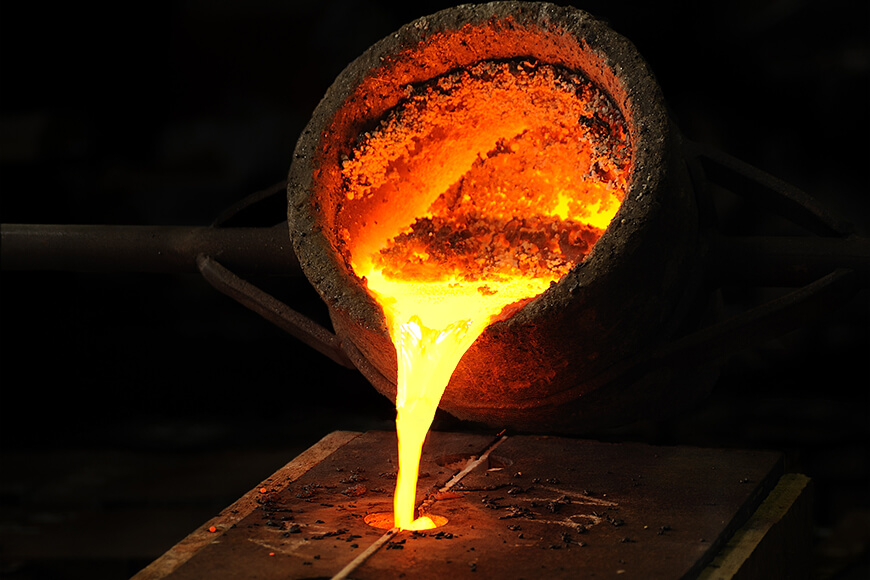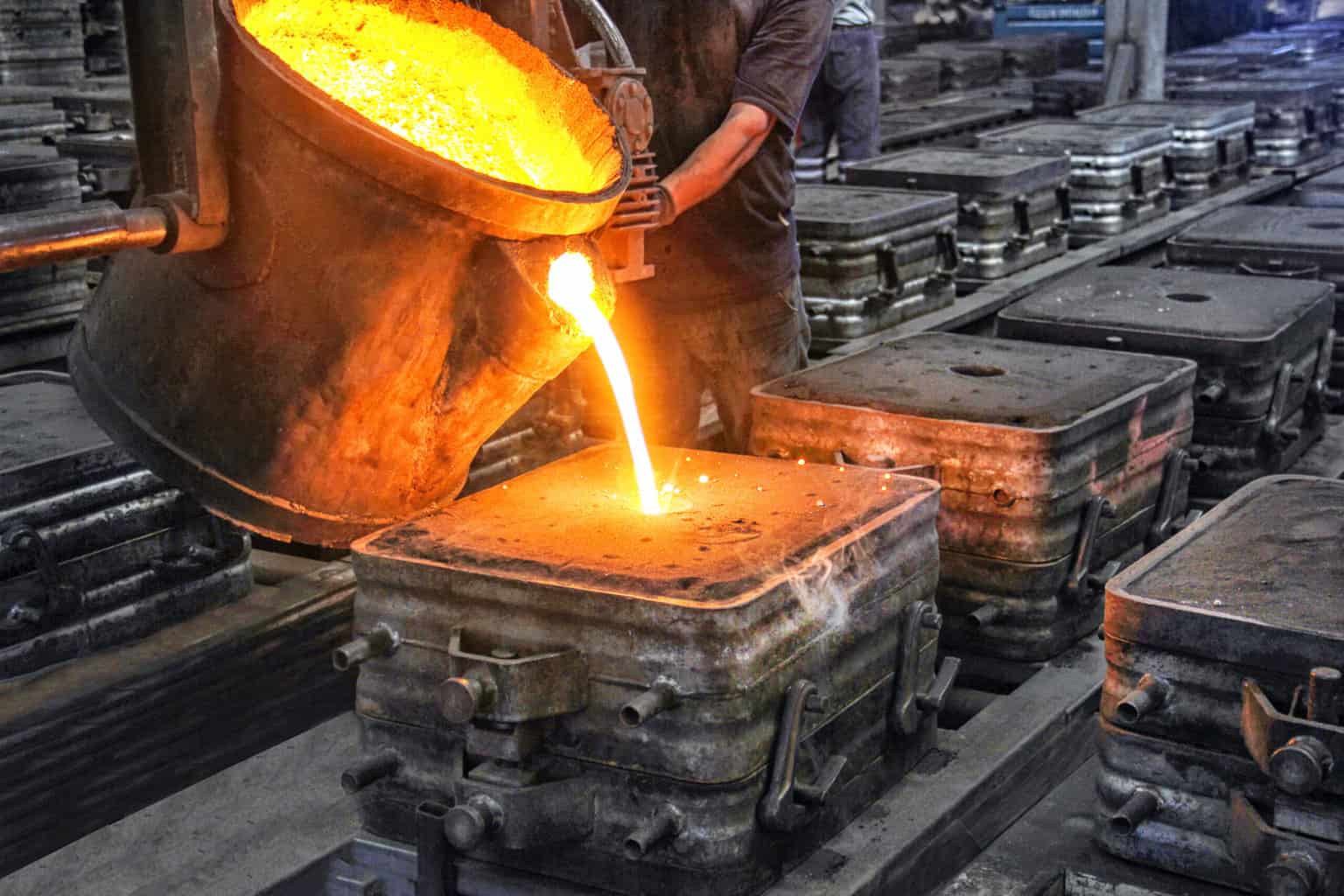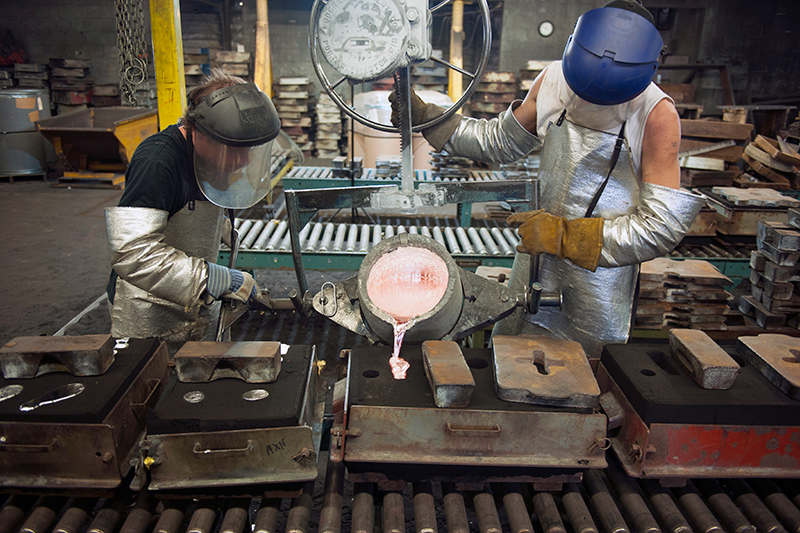How Casting Foundry Additive Manufacturing Accelerates Workflows
Discover the Innovations and Techniques on the planet of Casting Factory
The Casting Foundry industry is undertaking considerable change. Advanced products and innovative techniques are redefining standard methods. Automation and robotics are improving procedures, while lasting techniques are ending up being important. New mold layouts and additive production are providing extraordinary possibilities. Quality control actions are also evolving, making certain dependability in production. As these fads remain to shape the future of casting, one have to take into consideration just how they will affect the industry all at once.
The Role of Advanced Products in Spreading
Advanced materials play an essential duty in boosting the performance and high quality of casting procedures. They add to enhanced thermal stability, decreased contraction, and raised durability of actors items. Developments such as sophisticated porcelains and composite materials provide higher resistance to mechanical and thermal tensions, enabling the manufacturing of detailed styles with exceptional surface finishes. These products additionally facilitate much better mold and mildew and core production, causing minimized defects and enhanced dimensional accuracy.
The use of alloys with tailored residential properties permits for enhanced efficiency in details applications, such as aerospace and auto markets. As shops take on innovative products, they can accomplish higher power effectiveness and reduced waste generation, lining up with sustainability objectives. The combination of these materials not just streamlines manufacturing but likewise enhances the overall competition of Foundry procedures in a quickly developing market, noting a pivotal shift in typical Casting methods.
Automation and Robotics in Foundry Procedures
Automation and robotics are changing Foundry operations by boosting effectiveness and accuracy. These technologies enhance molding processes, reducing labor prices and decreasing human mistake. As a result, suppliers are significantly adopting automated systems to boost manufacturing capacities and meet climbing demand.
Benefits of Automation
The integration of automation and robotics into Foundry procedures has transformed conventional production methods, generating considerable advantages. Enhanced performance ranks among the main advantages, as automated systems run continually, minimizing cycle times and increasing result. Additionally, automation enhances accuracy and consistency in casting procedures, lessening problems and ensuring better items.
Price savings also arise from decreased labor prices and reduced material waste, permitting extra effective resource usage. Safety and security is one more important benefit; automation minimizes the danger of human injury by managing unsafe tasks. Additionally, real-time tracking capacities enable better information collection and analysis, assisting in educated decision-making. On the whole, the fostering of automation and robotics substantially maximizes functional effectiveness, leading to improved competitiveness in the Foundry industry.
Robotics in Molding Processes
Exactly how can robotics improve molding procedures in factories? Robotics greatly enhances effectiveness and precision in molding operations. Automated systems can handle repetitive tasks, such as placing patterns and putting liquified steel, minimizing the risk of human mistake and guaranteeing constant quality. In addition, robotic arms equipped with sophisticated sensors facilitate detailed mold styles, permitting complex geometries that typical approaches battle to attain.
Furthermore, robotics can operate in harmful settings, reducing the need for human treatment in dangerous tasks. This not just enhances employee safety however additionally maximizes production prices. By integrating robotics into molding processes, shops can accomplish higher throughput, reduced cycle times, and reduced functional costs, positioning themselves competitively in a progressing industry landscape.
Lasting Practices in Casting Foundries
As the demand for environmentally responsible manufacturing boosts, casting factories are taking on lasting techniques to reduce their environmental impact. Numerous factories are carrying out reusing programs for steel scrap, reducing waste and saving sources. By recycling products, they can significantly decrease the raw material intake that adds to environmental degradation.
Furthermore, energy-efficient procedures are being integrated right into operations. Shops are purchasing renewable resource resources, such as solar or wind power, to reduce reliance on fossil gas. This shift not just reduces greenhouse gas emissions yet additionally improves price financial savings with time.

Developments in Mold And Mildew Layout and Manufacture
Recent innovations in 3D printing innovation are revolutionizing mold style and construction in the Casting Foundry field. Furthermore, the introduction of lasting products is enhancing the ecological impact of manufacturing processes. Precision mold and mildew design strategies additionally add to enhanced performance and accuracy in the production of facility components.
3D Printing Technology Advancements
Although traditional mold and mildew style and construction methods have actually served the Foundry industry for years, improvements in 3D printing modern technology are changing these procedures. By allowing the development of very complicated geometries, 3D printing enables even more complex layouts that were previously impossible or cost-prohibitive. This modern technology reduces lead times considerably, as models and molds can be produced in a matter of hours instead of weeks (Casting Foundry). In addition, 3D printing facilitates quick version, permitting designers to examine and customize designs swiftly based upon comments. The ability to produce molds making use of different materials enhances flexibility and makes it possible for customized options for particular Casting applications. 3D printing innovation is reshaping the landscape of mold and mildew layout and construction in the Casting Foundry sector.
Sustainable Material Innovations
The change toward lasting methods in the Casting Foundry market is acquiring energy, with innovations in material choice playing an essential role. Foundries are significantly embracing environment-friendly materials, such as recycled metals and bio-based materials, to decrease ecological impact. These lasting materials not only reduce waste however also improve the general efficiency of the Casting procedure. Technologies in mold style, such as making use of 3D printing modern technology for producing mold and mildews with less product, further add to sustainability efforts. Furthermore, advancements in finish innovations permit decreased exhausts during casting operations. By focusing on lasting product developments, the Casting Foundry sector is relocating towards a more responsible future, lining up manufacturing experiment ecological stewardship and resource preservation.
Accuracy Mold And Mildew Engineering Techniques
As improvements in technology remain to reshape the Casting Foundry market, accuracy mold engineering strategies are emerging as essential components in boosting manufacturing quality and effectiveness. These cutting-edge methods take advantage of computer-aided style (CAD) and computer system numerical control (CNC) machining to develop mold and mildews with remarkable click for info accuracy. Methods such as additive production permit complex geometries that conventional methods can not achieve, considerably minimizing preparations and product waste. Additionally, the integration of simulation software program helps in forecasting mold behavior throughout spreading, making it possible for the optimization of designs prior to physical production. This proactive approach not only improves the total return yet additionally ensures that mold and mildews can be customized to fulfill details application needs, leading the way for more functional and innovative Casting remedies.
Additive Production: A Game Changer for Casting
While typical Casting methods have long been the backbone of production, additive production is swiftly transforming the landscape of casting foundries. This cutting-edge method, usually described as 3D printing, enables for the development of complicated geometries that were previously unattainable with traditional methods. By using electronic styles, foundries can her latest blog generate mold and mildews and cores with precision and rate, significantly decreasing lead times and product waste.
Additive manufacturing also assists in the manufacturing of tailored parts, allowing suppliers to react swiftly to particular client requirements, thus improving competition. In addition, the integration of additive processes right into Foundry procedures can streamline operations, improving overall efficiency. As the sector accepts these improvements, it is positioned to redefine the future of spreading, offering new chances for creative thinking and versatility. Subsequently, additive manufacturing stands as a critical growth, improving just how factories come close to style and production in a swiftly developing market.
Quality Assurance Techniques in Modern Foundries
Quality assurance strategies in modern-day shops are vital for making certain that actors products satisfy rigid market criteria and customer specs. These methods include a selection of methods, including statistical process control (copyright), which monitors production procedures to identify and eliminate irregularity. Non-destructive screening (NDT) methods, such as ultrasonic screening and X-ray evaluation, are utilized to detect interior imperfections without harming the product. Additionally, the application of automated evaluation systems improves both precision and performance, enabling real-time high quality analyses. Product traceability is an additional crucial element, ensuring that each batch of basic materials can be tracked throughout the manufacturing process. Furthermore, modern shops significantly utilize computer-aided design (CAD) and simulation software to forecast prospective issues before casting, promoting proactive high quality administration. By incorporating these advanced quality assurance methods, shops can substantially reduce waste, boost item reliability, and keep competitive benefit on the market.
The Future of Casting: Predictions and trends

In addition, the trend toward lasting methods is gaining momentum, with factories progressively adopting environmentally friendly materials and procedures. This shift not just addresses environmental concerns but also straightens with consumer need for greener items.
In addition, the increase of additive production is expected to revolutionize traditional Casting methods, enabling extra intricate styles and click resources reduced product waste.
As these trends materialize, the Casting market is most likely to experience considerable shifts in production methods, market demands, and workforce requirements. Companies that accept these adjustments will be well-positioned to thrive in a significantly competitive landscape.
Regularly Asked Questions
What Are the Usual Kinds Of Casting Procedures Used Today?
The typical types of casting procedures used today include sand spreading, investment spreading, die casting, and centrifugal spreading. Each method differs in application, material, and intricacy, catering to diverse commercial and manufacturing demands.
How Does Casting Compare to Various Other Production Approaches?
Casting, compared to various other making methods, supplies advantages like complicated form production and product efficiency. Nonetheless, it might involve longer lead times and higher preliminary prices, making it less appropriate for fast manufacturing contrasted to methods like machining.

What Industries Mostly Depend On Casting Foundries?
Industries such as automotive, machinery, building and construction, and aerospace greatly count on casting factories. These industries use casting for producing complicated metal elements, making sure longevity and precision in their items, which are essential for functional efficiency.
What Are the Normal Precaution in Casting Foundries?
Common precaution in casting foundries include personal safety equipment, appropriate ventilation, regular devices upkeep, safety and security training, and emergency action methods. These techniques aid minimize dangers linked with heats, poisonous materials, and heavy equipment procedures.
Just How Can I Begin an Occupation in Casting Foundry Procedures?
To start an occupation in casting Foundry operations, one ought to go after appropriate education and learning, look for apprenticeships, gain hands-on experience, and acquaint themselves with safety and security methods and equipment utilized in the Foundry industry to boost employability.
Current developments in 3D printing modern technology are reinventing mold and mildew layout and fabrication in the Casting Foundry field. The change toward sustainable techniques in the Casting Foundry market is acquiring momentum, with advancements in product option playing a pivotal duty. As developments in technology continue to reshape the Casting Foundry industry, accuracy mold and mildew engineering techniques are emerging as crucial components in improving production high quality and effectiveness. While traditional Casting techniques have long been the backbone of production, additive production is rapidly changing the landscape of casting shops. Modern-day factories significantly utilize computer-aided layout (CAD) and simulation software program to predict possible flaws before casting, promoting positive high quality administration.